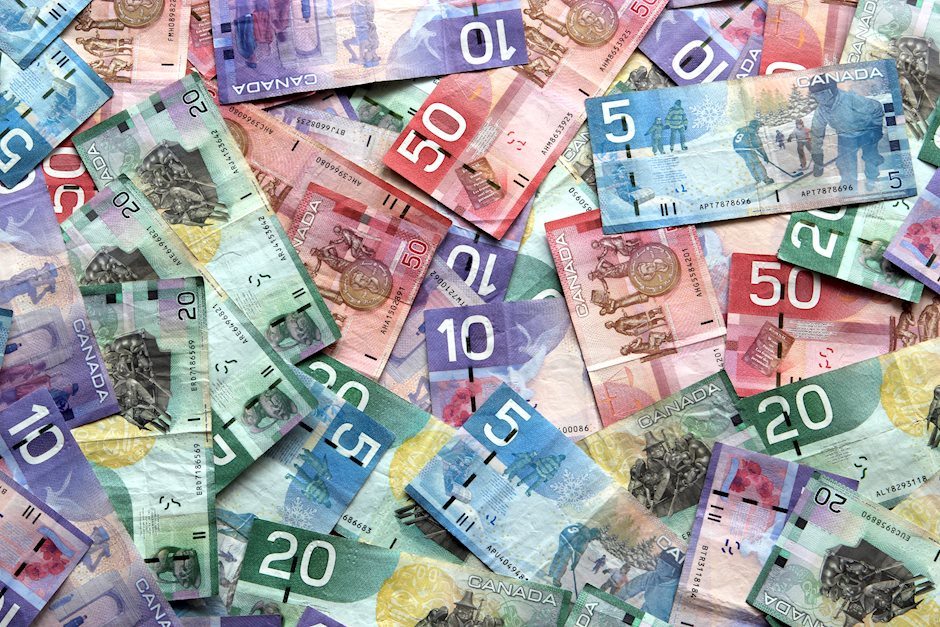USD/CAD remains capped below 1.4000, eyes on US jobs data, Fedspeak
- USD/CAD softens to near 1.3970 in Thursday’s early Asian session.
- Futures traders dialed back their expectations of a Fed rate cut at the December meeting.
- Lower crude oil prices undermine the commodity-linked Loonie.

The USD/CAD pair trades on a softer note around 1.3970 amid the modest decline in the Greenback during the early Asian session on Thursday. Traders will keep an eye on the US weekly Initial Jobless Claims, the Philadelphia Fed Manufacturing Index, Existing Home Sales, and the CB Leading Index, which are due later on Thursday. Also, the Federal Reserve’s (Fed) Hammack and Goolsbee are due to speak.
The recent strong US economic data, sticky inflation and Donald Trump's victory in the US presidential election have underpinned the US Dollar (USD) against the Loonie for the time being. Markets expect that Donald Trump’s administration will reignite inflation and slow the path of rate cuts from the Fed.
Additionally, the cautious tone from the Fed officials might cap the downside for the USD. On Wednesday, Fed governor Michelle Bowman emphasized that inflation still elevated in the last few months and the Fed needed to be cautious on rate cuts.
Futures traders have dialed back their expectations of a rate reduction at the December Fed meeting, according to data from the CME FedWatch Tool. They are now pricing in around 54% possibility that the Fed will cut rates by a quarter point, down from around 80% last week.
On the Loonie front, the fall in crude oil prices weighs on the commodity-linked Canadian Dollar (CAD). Nonetheless, the lower expectation that the Bank of Canada (BoC) will cut a deeper-than-usual interest rate in December might help limit the CAD’s losses. The markets are now pricing in nearly a 26% chance of a 50 basis point (bps) rate cut by the BoC next month, down from 37% before the CPI data release.
Canadian Dollar FAQs
The key factors driving the Canadian Dollar (CAD) are the level of interest rates set by the Bank of Canada (BoC), the price of Oil, Canada’s largest export, the health of its economy, inflation and the Trade Balance, which is the difference between the value of Canada’s exports versus its imports. Other factors include market sentiment – whether investors are taking on more risky assets (risk-on) or seeking safe-havens (risk-off) – with risk-on being CAD-positive. As its largest trading partner, the health of the US economy is also a key factor influencing the Canadian Dollar.
The Bank of Canada (BoC) has a significant influence on the Canadian Dollar by setting the level of interest rates that banks can lend to one another. This influences the level of interest rates for everyone. The main goal of the BoC is to maintain inflation at 1-3% by adjusting interest rates up or down. Relatively higher interest rates tend to be positive for the CAD. The Bank of Canada can also use quantitative easing and tightening to influence credit conditions, with the former CAD-negative and the latter CAD-positive.
The price of Oil is a key factor impacting the value of the Canadian Dollar. Petroleum is Canada’s biggest export, so Oil price tends to have an immediate impact on the CAD value. Generally, if Oil price rises CAD also goes up, as aggregate demand for the currency increases. The opposite is the case if the price of Oil falls. Higher Oil prices also tend to result in a greater likelihood of a positive Trade Balance, which is also supportive of the CAD.
While inflation had always traditionally been thought of as a negative factor for a currency since it lowers the value of money, the opposite has actually been the case in modern times with the relaxation of cross-border capital controls. Higher inflation tends to lead central banks to put up interest rates which attracts more capital inflows from global investors seeking a lucrative place to keep their money. This increases demand for the local currency, which in Canada’s case is the Canadian Dollar.
Macroeconomic data releases gauge the health of the economy and can have an impact on the Canadian Dollar. Indicators such as GDP, Manufacturing and Services PMIs, employment, and consumer sentiment surveys can all influence the direction of the CAD. A strong economy is good for the Canadian Dollar. Not only does it attract more foreign investment but it may encourage the Bank of Canada to put up interest rates, leading to a stronger currency. If economic data is weak, however, the CAD is likely to fall.
Author

Lallalit Srijandorn
FXStreet
Lallalit Srijandorn is a Parisian at heart. She has lived in France since 2019 and now becomes a digital entrepreneur based in Paris and Bangkok.

















